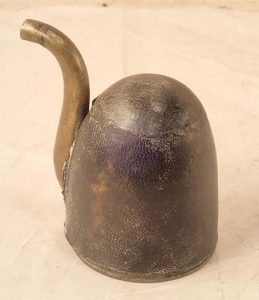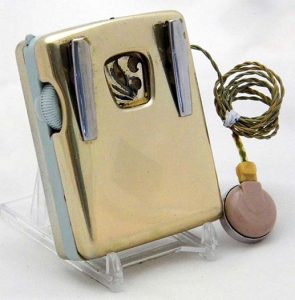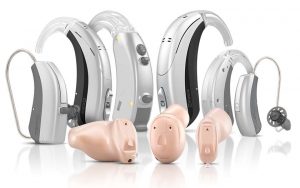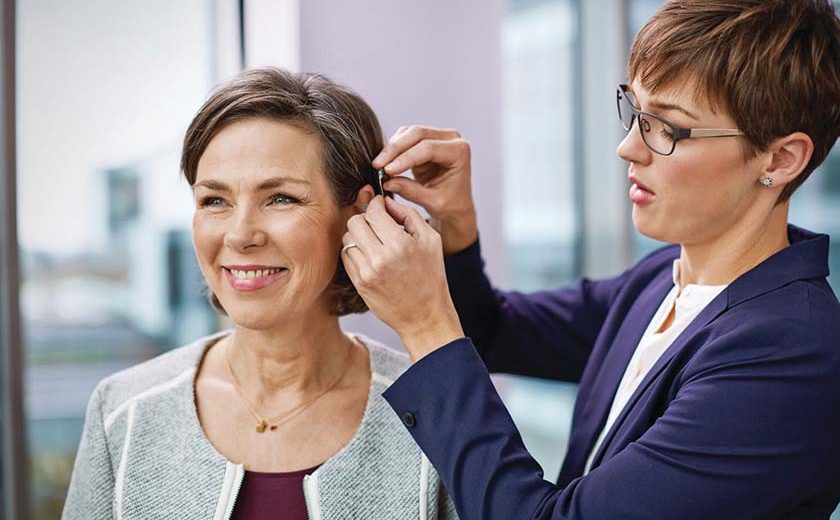Difficulty in hearing is not something new in the history of human disabilities. The recorded history of hearing loss goes back to generations in the past, and attempts to correct hearing loss have been in existence since people started to cup their hand behind their ear 9in attempt to hear better).
Today, there are many hearing aids and assistive listening devices available and these devices have actually made their way to us today through a long history of trial and errors since the initial attempts at improving hearing. Today, as technology would have it, hearing aid are still evolving, with some devices reaching near-perfect results.
 Beginning With Animal Horns To Ear Trumpets
Beginning With Animal Horns To Ear Trumpets
From as early as the 13th century,people started trying out ways to help those with hearing trouble. They used hollowed out horns of animals such as cows and rams as primitive hearing devices. It wasn’t until the 18th century that the more “modern” ear trumpet was invented. Funnel-shaped in design, ear trumpets were man’s first attempt at inventing a device for treating hearing loss. They didn’t amplify sound, however, but worked by collecting sound and “funneling” it through a narrow tube into the ear. Not at all like the nifty hearing devices of today,those bulky ear trumpets and the subsequent speaking tubes didn’t work all that well, but they had to make do with them back then.
When Electronic Hearing Aids Came Into The Picture
Who would have guessed that the invention of the telephone combined with the practical application of electricity in the 19th century turned out to positively affect the development of hearing aids and other assistive hearing devices. At the time, those suffering from hearing difficulties started to realize that it was easier for them to hear people’s voices through the telephone receiver held up to their ear compared to when people were talking to them in person.
The great American inventor,Thomas Edison, who experienced hearing loss firsthand, saw room for improvement in aiding hearing loss. In 1870 he invented a carbon transmitter for the telephone which amplified the electrical signal and increased the decibel level by about 15 decibels (dB). Although an amplification of about 30 dB is usually necessary to allow those with hearing loss to hear better, the invention of the carbon transmitter for the telephone paved the way for the technology that would eventually be used for carbon hearing aids, devices created specifically for hearing loss. Although not ideal due to their limited frequency range and tendency to produce scratchy sound, carbon hearing aids were in use from 1902 until the advent of the next wave of technology: vacuum tube hearing aids.
Vacuum Tube Technology
Beginning in the 1920s, hearing aids using vacuum tubes were able to increase the sound level by as much as 70 dB. These sound levels were achieved because vacuum tubes controlled the flow of electricity better than carbon.
The size of these devices though,which were quite large, posed a problem. They were the size of a filing cabinet, so the users could not carry it around. By 1924 the size of vacuum tube hearing aids had been reduced so all of the components could fit in a small wooden box, with a receiver that the user held up to the ear. Despite these improvements, they were still heavy, bulky and conspicuous. Also, they amplified all sound, not just the sounds the user wanted to hear.
Improvements in technology continued in 1938 when Aurex introduced the first truly wearable hearing aids, consisting of an earpiece, wire and receiver that could be clipped to the user’s clothing. Unfortunately, this model also required the use of a battery pack – usually, this was strapped to the user’s leg.
Thanks to technology developed during World War II, the late 1940s finally saw the production of hearing aids with circuit boards and button-sized batteries, allowing the batteries, amplifier and microphone to be combined into one portable, pocket-sized unit. Even though they were marketed as discreet, the units were still connected to individual earpieces via wires, which were still deemed visually unappealing.
Hence, the wait continued on for small, one-piece hearing aids that could fit entirely in the ear and truly be worn discreetly. It wasn’t such a long wait after all.
 Mid-20th Century: Transistor Technology
Mid-20th Century: Transistor Technology
The move to smaller, more discreet hearing aids finally got underway in 1948, when Bell Telephone Laboratories invented the transistor. A transistor is a switch that controls the movement of electrons and thus electricity. Transistors can start and stop the flow of a current and also control the volume of a current, making it possible to have multiple settings in one device.
Norman Krim, an engineer at Raytheon, the inventor of the previous sub-miniature vacuum tube technology, saw the potential application for transistors in hearing aids. By 1952, Krim was able to create junction transistors for hearing aid companies. The transistor technology not only enabled hearing aids to be made smaller, they could finally be worn either completely inside or behind the ear. The new hearing aids were so popular and successful that over 200,000 transistor hearing aids were sold in 1953 alone, eclipsing the sale of vacuum tube hearing aids.
Where Technology Has Taken Hearing Aids Today
By the year 2000, hearing aids had the ability to be programmed, allowing for user customization, flexibility and fine tuning, and by 2005 digital hearing aids represented about 80 percent of the hearing aid market.
Digital technology is the same circuitry that is used in cell phones and computers. Today’s hearing aids can be fine-tuned by a hearing care professional and customized to an individual’s hearing needs. They can adapt to different listening environments and be connected to other high-tech devices such as computers, televisions and telephones. Features such as telecoils, Bluetooth and FM connectivity allow compatibility with other electronic devices and accessibility in public spaces.
A Far Cry From Yesterday
Hearing aids have come a long way from the days of ear trumpets, and they continue to evolve as technology advances. Many hearing aids are capable of adapting to different listening situations without the intervention of the user. Some devices have truly rechargeable battery. Long-wearing hearing aids, which can stay in the wearer’s ear canals for several weeks, have been available for several years. Looking at the way things are going, it seems like hearing aids will continue to increase in performance and comfort while decreasing in size.



